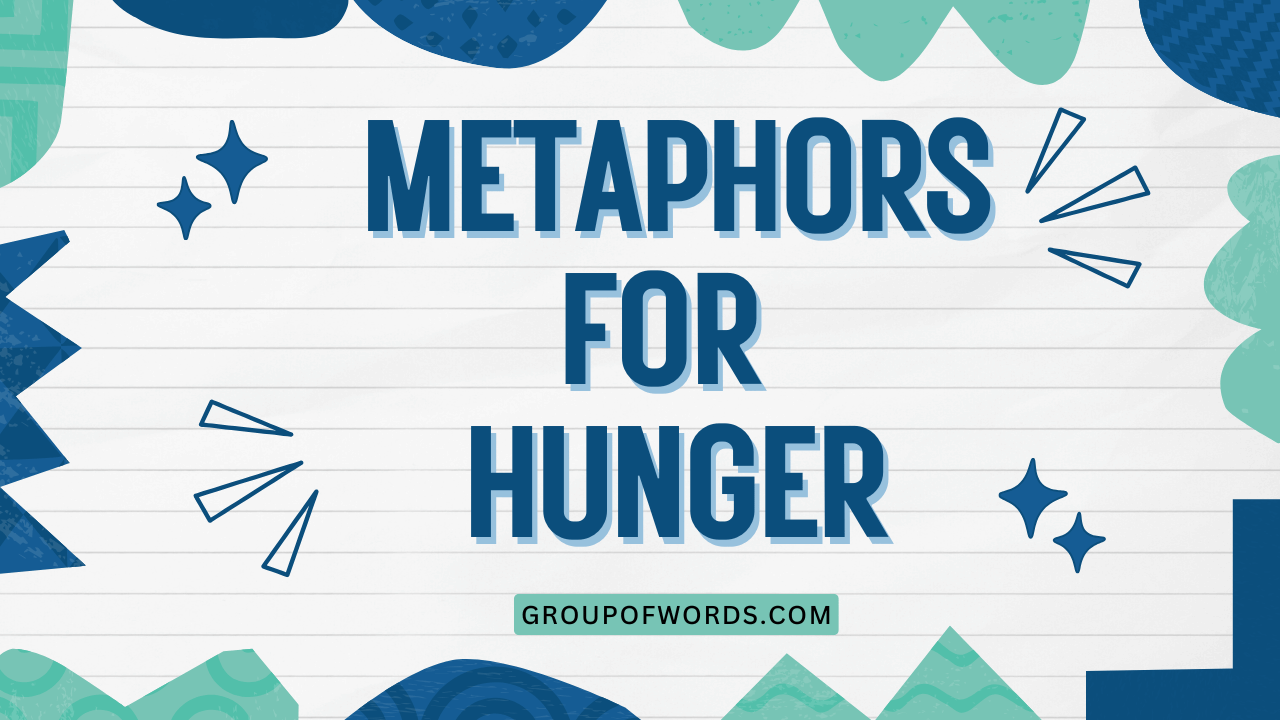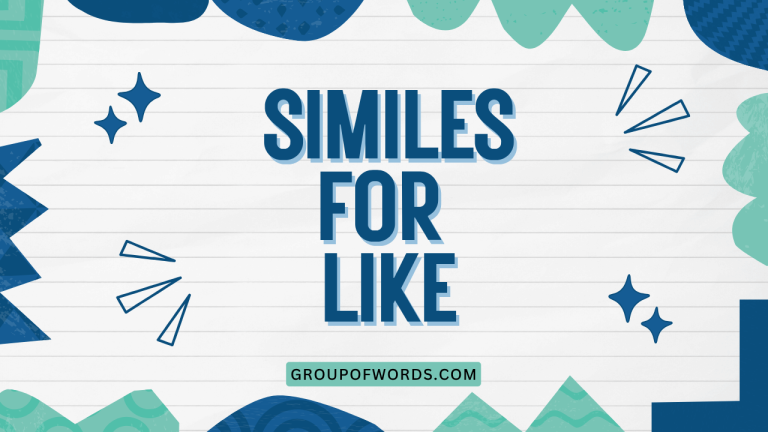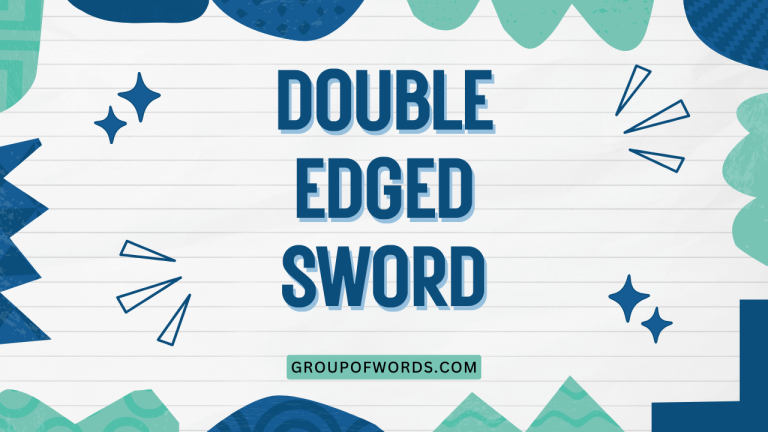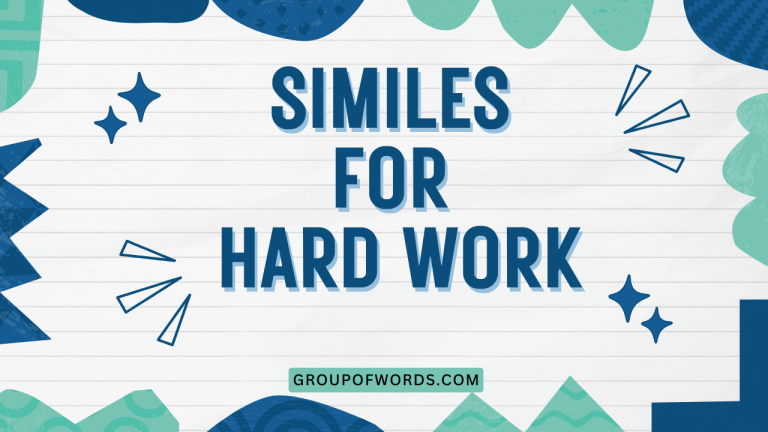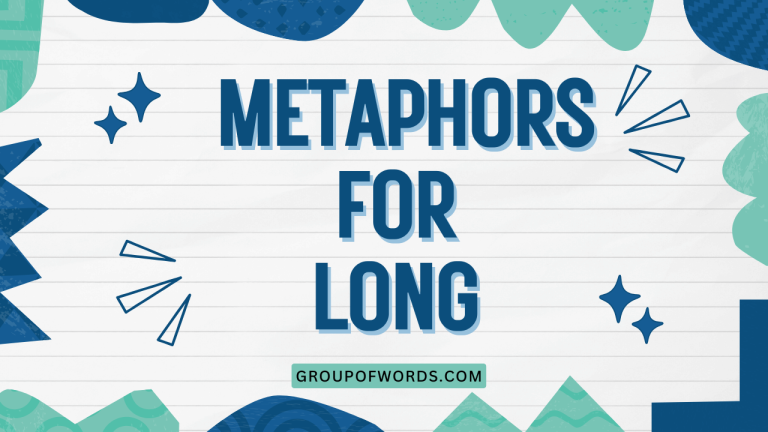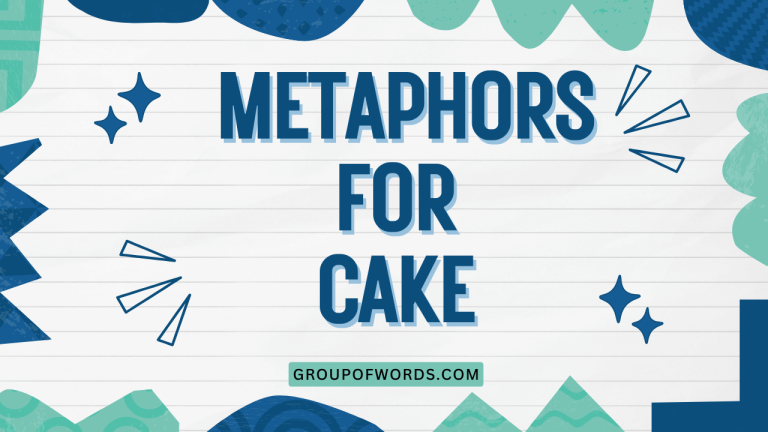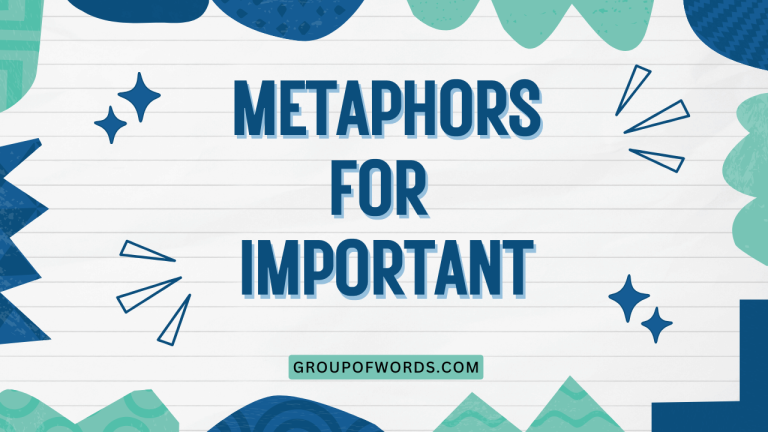Metaphors for Hunger: A Grammatical Exploration
Hunger, a fundamental human experience, often transcends simple physical sensation. We use vivid language to describe its intensity, employing metaphors that paint a richer, more relatable picture.
Understanding these metaphors not only enhances our comprehension of English but also deepens our appreciation for the nuances of expression. This article delves into the grammatical structure and usage of metaphors for hunger, providing a comprehensive guide for language learners and enthusiasts alike.
Whether you’re a student, writer, or simply curious about the power of language, this exploration will equip you with the tools to recognize, analyze, and effectively use these expressive figures of speech.
Table of Contents
- Introduction
- Definition of Metaphor and Hunger Metaphors
- Classification of Metaphors
- Function of Metaphors in Describing Hunger
- Contexts for Using Hunger Metaphors
- Structural Breakdown of Hunger Metaphors
- Tenor and Vehicle
- The Ground of Comparison
- Implied Metaphors
- Types and Categories of Hunger Metaphors
- Animalistic Hunger
- Violent Hunger
- Empty Space Hunger
- Burning Hunger
- Consuming Hunger
- Examples of Hunger Metaphors
- Animalistic Hunger Examples
- Violent Hunger Examples
- Empty Space Hunger Examples
- Burning Hunger Examples
- Consuming Hunger Examples
- Usage Rules for Hunger Metaphors
- Appropriateness of Metaphors
- Consistency in Metaphorical Language
- Common Mistakes with Hunger Metaphors
- Mixed Metaphors
- Clichés and Overused Metaphors
- Practice Exercises
- Exercise 1: Identifying Hunger Metaphors
- Exercise 2: Creating Hunger Metaphors
- Exercise 3: Correcting Inappropriate Metaphors
- Advanced Topics in Metaphorical Language
- Extended Metaphors
- Dead Metaphors
- Frequently Asked Questions
- Conclusion
Definition of Metaphor and Hunger Metaphors
A metaphor is a figure of speech that directly compares two unrelated things, asserting that they are the same or similar in some way. Unlike similes, which use “like” or “as” to make a comparison, metaphors imply the comparison directly, creating a more vivid and impactful image. Metaphors are essential for adding depth, color, and emotional resonance to language.
Hunger metaphors are specific instances of this figure of speech used to describe the feeling of hunger. They go beyond simply stating “I am hungry” and instead employ evocative language to convey the intensity, nature, and impact of the hunger. These metaphors often draw on imagery related to animals, violence, emptiness, fire, or consumption to illustrate the feeling of being hungry in a more compelling way.
Classification of Metaphors
Metaphors can be classified in several ways. One common classification is based on their explicitness. Explicit metaphors directly state the comparison (e.g., “My stomach is a bottomless pit”). Implicit metaphors, also known as implied metaphors, suggest the comparison without directly stating it (e.g., “My stomach growled loudly,” implying hunger is like an animal). Another classification is based on the source domain, or the area of experience from which the metaphor is drawn (e.g., animalistic, violent, etc.).
Function of Metaphors in Describing Hunger
The primary function of hunger metaphors is to enhance and intensify the description of hunger. They allow us to express not just the physical sensation but also the emotional and psychological impact of being hungry. For example, saying “I’m starving” is a common metaphor that conveys a more urgent and desperate feeling than simply saying “I’m hungry.” Metaphors can also help to create vivid imagery in the reader’s or listener’s mind, making the experience of hunger more relatable and impactful. Furthermore, they can add humor or dramatic effect to a situation.
Contexts for Using Hunger Metaphors
Hunger metaphors are appropriate in a variety of contexts, ranging from informal conversations to literary works. In casual conversation, they can add emphasis and personality to your speech. In creative writing, they can be used to create more compelling and memorable descriptions. In advertising, they can be used to evoke a sense of desire or urgency, encouraging consumers to satisfy their hunger. However, it’s important to consider your audience and the overall tone of the situation when using metaphors. Overusing metaphors or using inappropriate metaphors can detract from your message.
Structural Breakdown of Hunger Metaphors
Understanding the structure of a metaphor can help you to analyze and create more effective comparisons. A traditional metaphor typically consists of two main elements: the tenor and the vehicle.
Tenor and Vehicle
The tenor is the subject of the metaphor, the thing being described. In the context of hunger metaphors, the tenor is the feeling of hunger itself. The vehicle is the object or concept that is used to describe the tenor. It’s the thing that the tenor is being compared to. For example, in the metaphor “My hunger is a ravenous wolf,” the tenor is “hunger” and the vehicle is “a ravenous wolf.”
The Ground of Comparison
The ground is the shared characteristic or similarity between the tenor and the vehicle. It’s the reason why the comparison makes sense. In the example above, the ground is the idea of intense, insatiable desire. Both hunger and a ravenous wolf are associated with a strong, urgent need for something.
Implied Metaphors
An implied metaphor doesn’t explicitly state the comparison between the tenor and vehicle. Instead, it suggests the comparison through subtle language.
For example, instead of saying “My hunger is a fire,” you might say “Flames licked at my stomach,” implying that hunger is like a fire without directly stating the comparison.
Types and Categories of Hunger Metaphors
Hunger metaphors can be broadly categorized based on the type of imagery they evoke. Here are some common categories:
Animalistic Hunger
These metaphors compare hunger to the behavior or characteristics of animals, often emphasizing the primal, instinctual nature of the feeling. Examples include “My stomach is growling like a bear” or “I’m as hungry as a horse.” These metaphors often convey a sense of urgency and intensity.
Violent Hunger
These metaphors use violent or aggressive imagery to describe the feeling of hunger, highlighting its disruptive and forceful nature. Examples include “My hunger is gnawing at my insides” or “I’m battling a ferocious hunger.” These metaphors often convey a sense of discomfort and desperation.
Empty Space Hunger
These metaphors focus on the feeling of emptiness in the stomach, often using imagery of voids or cavities. Examples include “My stomach feels like a bottomless pit” or “I have a gaping hole where my stomach should be.” These metaphors often convey a sense of hollowness and deprivation.
Burning Hunger
These metaphors use imagery of fire or heat to describe the sensation of hunger, emphasizing its intensity and discomfort. Examples include “My hunger is a burning flame” or “I have a fire in my belly.” These metaphors often convey a sense of urgency and discomfort.
Consuming Hunger
These metaphors describe hunger as something that is actively devouring or consuming the person experiencing it. Examples include “Hunger is eating me alive” or “My hunger is swallowing me whole.” These metaphors often convey a sense of being overwhelmed and powerless.
Examples of Hunger Metaphors
To further illustrate the different types of hunger metaphors, here are some examples organized by category:
Animalistic Hunger Examples
The following table provides examples of animalistic hunger metaphors. These are categorized to illustrate how different animals can evoke different aspects of hunger, such as ferocity, need, or desperation.
These metaphors often emphasize the primal, instinctual nature of hunger.
| Metaphor | Explanation |
|---|---|
| My stomach is growling like a bear. | Compares the sound of the stomach to the roar of a hungry bear. |
| I’m as hungry as a wolf. | Implies a fierce and insatiable appetite. |
| I could eat a horse. | Exaggerates the amount of food the person feels capable of consuming. |
| My hunger is a ravenous beast. | Portrays hunger as a wild, uncontrollable force. |
| My stomach is chirping like a baby bird. | Suggests a constant, demanding need for food. |
| I’m as peckish as a hen. | Describes a mild, nagging hunger. |
| My hunger is a persistent mosquito. | Implies an irritating and relentless craving. |
| I feel like a starving hyena. | Conveys a desperate and scavenging hunger. |
| My stomach is rumbling like a lion. | Suggests a powerful and assertive hunger. |
| I’m as hungry as a pack of wolves. | Emphasizes the collective and intense nature of the hunger. |
| My hunger is a nagging puppy. | Implies a constant, attention-seeking feeling of hunger. |
| I feel like a gannet diving for fish. | Expresses a strong, focused drive to satisfy hunger. |
| My stomach is croaking like a frog. | Suggests a low, persistent sound indicating hunger. |
| I’m as hungry as a beaver building a dam. | Conveys a deep, instinctive need to satisfy hunger. |
| My hunger is a badger digging for food. | Implies a relentless and determined search for sustenance. |
| I feel like a vulture circling carrion. | Suggests a strong, almost morbid hunger. |
| My stomach is howling like a coyote. | Implies a desperate and lonely feeling of hunger. |
| I’m as hungry as a swarm of locusts. | Emphasizes the collective and destructive nature of hunger. |
| My hunger is a persistent ant. | Implies a small but constant and irritating hunger. |
| I feel like a starving kitten. | Conveys a weak, needy and vulnerable feeling of hunger. |
| My stomach is roaring like a tiger. | Suggests a powerful and dominant hunger. |
| I’m as hungry as a flock of seagulls. | Emphasizes the competitive and eager nature of hunger. |
| My hunger is a bothersome fly. | Implies a small but irritating and hard-to-ignore hunger. |
| I feel like a starving owl. | Suggests a sharp, focused and intense hunger. |
Violent Hunger Examples
The following table presents examples of violent hunger metaphors. These metaphors use aggressive and forceful imagery to describe the feeling of hunger, highlighting its disruptive and often uncomfortable nature.
They convey a sense of internal conflict and urgency.
| Metaphor | Explanation |
|---|---|
| My hunger is gnawing at my insides. | Suggests a painful, persistent feeling. |
| I’m battling a ferocious hunger. | Portrays hunger as a powerful enemy. |
| My stomach is eating itself. | Implies a self-destructive level of hunger. |
| Hunger is stabbing me in the gut. | Conveys a sharp, intense pain. |
| My stomach is waging war on itself. | Suggests an internal conflict and discomfort. |
| Hunger is a relentless assault. | Portrays hunger as a continuous and forceful attack. |
| My stomach is clenching in protest. | Implies a physical resistance to the lack of food. |
| Hunger is a tyrant ruling my body. | Conveys a loss of control due to hunger. |
| My stomach feels like it’s being ripped apart. | Suggests an extreme and agonizing level of hunger. |
| Hunger is a constant barrage. | Portrays hunger as a relentless and overwhelming force. |
| My stomach is a battlefield. | Suggests an internal conflict between hunger and resistance. |
| Hunger is tearing at my resolve. | Implies a weakening of willpower due to hunger. |
| My stomach is a grinding machine. | Conveys a relentless and uncomfortable churning. |
| Hunger is a vise grip on my stomach. | Suggests a tight, painful constriction. |
| My stomach is a churning vortex. | Portrays a chaotic and overwhelming feeling of hunger. |
| Hunger is a relentless hunter. | Implies a persistent and unavoidable pursuit of food. |
| My stomach is a rebellious organ. | Suggests a defiant and disruptive hunger. |
| Hunger is a constant tormentor. | Conveys a continuous and agonizing feeling. |
| My stomach feels like it’s imploding. | Suggests a collapsing and destructive hunger. |
| Hunger is a brutal dictator. | Portrays a controlling and oppressive influence. |
| My stomach is a raging inferno. | Suggests an intense and destructive burning hunger. |
| Hunger is a savage beast unleashed. | Implies a wild and uncontrollable craving. |
| My stomach is a gnashing maw. | Conveys a relentless and aggressive hunger. |
| Hunger is a piercing arrow. | Suggests a sharp, sudden and intense pain. |
Empty Space Hunger Examples
This table below illustrates hunger through empty space metaphors. These metaphors describe the feeling of hunger by focusing on sensations of emptiness, hollowness, and lack.
They often create a sense of deprivation and the urgent need for fulfillment.
| Metaphor | Explanation |
|---|---|
| My stomach feels like a bottomless pit. | Suggests an insatiable hunger that can never be filled. |
| I have a gaping hole where my stomach should be. | Conveys a sense of emptiness and deprivation. |
| My stomach is an empty void. | Implies a complete lack of substance or satisfaction. |
| I feel like I have nothing inside me. | Suggests a physical and emotional emptiness. |
| My stomach is a hollow cavern. | Conveys a sense of vast emptiness and echoing hunger. |
| I have a vacuum in my belly. | Implies a strong, sucking sensation of hunger. |
| My stomach feels like a desolate wasteland. | Suggests a barren and lifeless emptiness. |
| I’m running on empty. | Conveys a lack of energy and sustenance. |
| My stomach is a black hole. | Implies an insatiable hunger that consumes everything. |
| I feel like I’m fading away. | Suggests a gradual loss of energy and vitality due to hunger. |
| My stomach is an empty shell. | Conveys a sense of hollowness and lack of substance. |
| I feel like I’m disappearing from the inside. | Implies a gradual fading due to lack of nourishment. |
| My stomach is an echoing chamber. | Suggests a vast emptiness and resounding hunger. |
| I feel like I’m withering away. | Conveys a sense of decline and decay due to hunger. |
| My stomach is an empty vessel. | Implies a lack of content and a need to be filled. |
| I feel like I’m hollowing out from within. | Suggests a gradual emptying and weakening due to hunger. |
| My stomach is a desolate plain. | Conveys a sense of barrenness and emptiness. |
| I feel like I’m evaporating. | Implies a gradual disappearance due to lack of sustenance. |
| My stomach is an empty arena. | Suggests a vast, unoccupied space and a yearning for food. |
| I feel like I’m shrinking from the inside. | Implies a gradual reduction in size and strength due to hunger. |
| My stomach is a vacant lot. | Conveys a sense of emptiness and potential for fulfillment. |
| I feel like I’m becoming transparent. | Suggests a growing weakness and lack of substance. |
| My stomach is a deserted island. | Implies a sense of isolation and deprivation. |
| I feel like I’m draining from the inside. | Conveys a gradual loss of energy and vitality. |
Burning Hunger Examples
The table below includes examples of burning hunger metaphors. These metaphors utilize imagery of fire and heat to describe the sensation of hunger, emphasizing its intensity and discomfort.
They often convey a sense of urgency and a burning need for satisfaction.
| Metaphor | Explanation |
|---|---|
| My hunger is a burning flame. | Suggests an intense and consuming desire for food. |
| I have a fire in my belly. | Conveys a sense of burning hunger and discomfort. |
| My stomach is a furnace. | Implies a strong and constant burning sensation. |
| Hunger is like acid eating at my stomach lining. | Suggests a corrosive and painful sensation. |
| My stomach is simmering with hunger. | Conveys a slow and building burning sensation. |
| I feel a hot emptiness inside me. | Implies a combination of emptiness and burning discomfort. |
| My hunger is a scorching heat. | Suggests an intense and unbearable sensation. |
| I have a burning desire for food. | Conveys a strong and urgent craving. |
| My stomach is an inferno. | Implies an extreme and uncontrollable burning sensation. |
| Hunger is a searing pain. | Suggests a sharp and intense discomfort. |
| My stomach is a hot coal. | Conveys a slow and persistent burning sensation. |
| I feel a burning hollowness inside me. | Implies a combination of emptiness and burning discomfort. |
| My hunger is a raging fire. | Suggests an intense and overwhelming sensation. |
| I’m consumed by a burning hunger. | Conveys a sense of being overwhelmed by the desire for food. |
| My stomach is a smoldering ember. | Implies a lingering and persistent burning sensation. |
| I feel a fiery emptiness inside me. | Suggests a combination of emptiness and burning discomfort. |
| My hunger is an intense heatwave. | Suggests an overwhelming and oppressive sensation. |
| I’m burning up with hunger. | Conveys a sense of intense and urgent need for food. |
| My stomach is a volcanic crater. | Implies a vast and potentially explosive burning sensation. |
| Hunger is a molten flow in my gut. | Suggests a slow, intense and potentially destructive burning sensation. |
| My stomach is a blazing sun. | Conveys a powerful and unrelenting burning sensation. |
| I feel like my insides are on fire. | Suggests an extreme and agonizing burning sensation. |
Consuming Hunger Examples
The following table offers examples of consuming hunger metaphors. These metaphors describe hunger as something that is actively devouring or consuming the person experiencing it, emphasizing the overwhelming and all-encompassing nature of the sensation.
They often convey a sense of being powerless against the force of hunger.
| Metaphor | Explanation |
|---|---|
| Hunger is eating me alive. | Suggests a gradual and destructive process. |
| My hunger is swallowing me whole. | Conveys a sense of being completely overwhelmed. |
| Hunger is devouring my energy. | Implies a loss of vitality and strength. |
| I’m being consumed by hunger. | Suggests a complete takeover by the sensation. |
| Hunger is draining me from the inside out. | Conveys a gradual loss of substance and energy. |
| My hunger is absorbing all my attention. | Implies a complete focus on the need for food. |
| I feel like hunger is sucking the life out of me. | Suggests a gradual and debilitating process. |
| Hunger is engulfing my thoughts. | Conveys a sense of being overwhelmed by cravings. |
| I’m being devoured by hunger. | Suggests a rapid and destructive process. |
| Hunger is consuming my every waking moment. | Implies a constant and inescapable focus on food. |
| I feel like hunger is draining my soul. | Suggests a deep and profound loss of vitality. |
| Hunger is absorbing my will to resist. | Conveys a weakening of willpower due to cravings. |
| I’m being eaten away by hunger. | Suggests a slow and destructive process. |
| Hunger is consuming my peace of mind. | Implies a loss of tranquility and contentment. |
| I feel like hunger is sucking the marrow from my bones. | Suggests a deep and debilitating loss of strength. |
| Hunger is engulfing my senses. | Conveys a sense of being overwhelmed by cravings and sensory input. |
| I’m being eroded by hunger. | Suggests a gradual wearing away of strength and vitality. |
| Hunger is consuming my joy. | Implies a loss of happiness and pleasure. |
| I feel like hunger is draining the color from my life. | Suggests a loss of vibrancy and enjoyment. |
| Hunger is absorbing my resolve. | Conveys a weakening of determination and willpower. |
| I’m being hollowed out by hunger. | Suggests a gradual emptying and weakening from within. |
| Hunger is consuming my focus. | Implies a complete distraction and inability to concentrate. |
| I feel like hunger is leeching my energy. | Suggests a slow and persistent draining of vitality. |
| Hunger is absorbing my independence. | Conveys a feeling of being controlled by the need for food. |
Usage Rules for Hunger Metaphors
While metaphors can add richness and depth to your language, it’s important to use them carefully and appropriately. Here are some key usage rules to keep in mind:
Appropriateness of Metaphors
Consider the context and audience when choosing a metaphor. A violent or graphic metaphor might be appropriate in a dramatic scene in a novel, but it would be inappropriate in a casual conversation at a dinner party. Choose metaphors that are relevant and understandable to your audience.
Consistency in Metaphorical Language
Avoid mixed metaphors, which combine incompatible images or ideas. For example, “My hunger is a burning flame that’s also a bottomless pit” is a mixed metaphor because fire and pits are not typically associated with each other. Stick to a consistent image or theme within a single metaphor.
Common Mistakes with Hunger Metaphors
Even experienced writers can make mistakes when using metaphors. Here are some common pitfalls to avoid:
Mixed Metaphors
A mixed metaphor combines two or more incompatible metaphors, creating a confusing and often humorous effect. For example, saying “Let’s nip it in the bud and hammer out the details” combines two unrelated images (gardening and metalworking). The result is nonsensical. It’s crucial to maintain a consistent image throughout your metaphorical expression.
Correct: Let’s address the issue early to prevent it from escalating.
Incorrect: Let’s nip it in the bud and hammer out the details.
Clichés and Overused Metaphors
Clichés are metaphors that have become so common that they have lost their impact and originality. Examples include “hungry as a horse” or “starving.” While these metaphors are grammatically correct, they can sound uninspired and predictable. Try to find fresh and original ways to express your ideas.
Original: My hunger felt like a pack of wolves tearing at my stomach.
Cliché: I was as hungry as a horse.
Practice Exercises
Test your understanding of hunger metaphors with these exercises:
Exercise 1: Identifying Hunger Metaphors
Identify the hunger metaphors in the following sentences. Explain what makes them metaphors and what type of imagery they evoke.
| Question | Answer |
|---|---|
| 1. My stomach is a rumbling volcano. | Metaphor: “rumbling volcano.” It compares the stomach to a volcano, evoking imagery of intense, eruptive hunger. |
| 2. I’m so hungry I could eat a small elephant. | Metaphor: “eat a small elephant.” It exaggerates the amount of food the person feels capable of consuming. |
| 3. Hunger is a relentless beast clawing at my insides. | Metaphor: “relentless beast clawing.” It portrays hunger as a violent, animalistic force. |
| 4. My stomach feels like a vast, empty desert. | Metaphor: “vast, empty desert.” It compares the stomach to a desert, evoking imagery of emptiness and desolation. |
| 5. I’m famished. | Metaphor: “famished” (historically). It implies a severe lack of food, to the point of suffering. |
| 6. The hunger pangs bit at my insides. | Metaphor: “bit at my insides.” It compares the hunger pangs to an animal bite, evoking imagery of pain and aggression. |
| 7. My stomach is an empty cavern. | Metaphor: “empty cavern.” It compares the stomach to a dark, hollow space, emphasizing the feeling of emptiness. |
| 8. Hunger is a fire burning within me. | Metaphor: “fire burning.” It compares hunger to a flame, evoking imagery of heat and intensity. |
| 9. I felt a hollow ache in my gut. | Metaphor: “hollow ache.” It conveys a sense of emptiness combined with pain. |
| 10. My appetite is a ravenous wolf tonight. | Metaphor: “ravenous wolf.” It compares appetite to a hungry wolf, evoking imagery of insatiable desire. |
Exercise 2: Creating Hunger Metaphors
Create your own hunger metaphors using the following prompts:
| Prompt | Example Answer |
|---|---|
| 1. Describe your hunger using an animal. | My hunger is a persistent badger, digging relentlessly for food. |
| 2. Describe your hunger using a natural disaster. | My hunger is a tsunami, washing over me with its overwhelming force. |
| 3. Describe your hunger using a weapon. | My hunger is a dull knife, sawing away at my resolve. |
| 4. Describe your hunger using a place. | My stomach is a forgotten warehouse, echoing with emptiness. |
| 5. Describe your hunger using a feeling. | My hunger is a gnawing anxiety, twisting my insides. |
| 6. Describe your hunger as a creature. | My hunger is a shadowy gremlin, pinching at my stomach. |
| 7. Describe your hunger using a machine. | My stomach is a churning engine, desperately needing fuel. |
| 8. Describe your hunger using a weather phenomenon. | My hunger is a drought, parching my insides. |
| 9. Describe your hunger using an emotion. | My hunger is a desperate longing, consuming my thoughts. |
| 10. Describe your hunger using a texture. | My stomach feels like sandpaper, rasping with emptiness. |
Exercise 3: Correcting Inappropriate Metaphors
Identify and correct the inappropriate metaphors in the following sentences:
| Question | Answer |
|---|---|
| 1. My hunger is a sweet symphony of starvation. | Inappropriate: “sweet symphony” (hunger is generally unpleasant). Corrected: My hunger is a discordant orchestra, playing a tune of discomfort. |
| 2. My stomach is a bubbling brook of emptiness. | Inappropriate: “bubbling brook” (brook suggests life and movement, not emptiness). Corrected: My stomach is a stagnant pond of emptiness. |
| 3. Hunger is a gentle
breeze caressing my insides. |
Inappropriate: “gentle breeze” (hunger is rarely gentle). Corrected: Hunger is a relentless wind, howling through my insides. |
| 4. My appetite is a fluffy cloud of desire. | Inappropriate: “fluffy cloud” (doesn’t convey urgency or intensity). Corrected: My appetite is a gathering storm of desire, threatening to break. |
| 5. My stomach feels like a cozy fireplace of emptiness. | Inappropriate: “cozy fireplace” (fireplaces are warm and comforting, not empty). Corrected: My stomach feels like a cold hearth of emptiness, devoid of warmth. |
| 6. Hunger is a soft lullaby in my belly. | Inappropriate: “soft lullaby” (lullabies are soothing, not indicative of hunger). Corrected: Hunger is a jarring alarm in my belly, demanding attention. |
| 7. My stomach is a cheerful garden of emptiness. | Inappropriate: “cheerful garden” (gardens are lively, not empty). Corrected: My stomach is a barren wasteland of emptiness, devoid of life. |
| 8. Hunger is a playful kitten batting at my insides. | Inappropriate: “playful kitten” (doesn’t convey the urgency or discomfort of hunger). Corrected: Hunger is a feral cat, scratching at my insides. |
| 9. My appetite is a delicate flower blooming in my stomach. | Inappropriate: “delicate flower” (doesn’t convey the intensity of hunger). Corrected: My appetite is a Venus flytrap, snapping shut in my stomach. |
| 10. My stomach feels like a peaceful lake of emptiness. | Inappropriate: “peaceful lake” (lakes are tranquil, not necessarily indicative of hunger). Corrected: My stomach feels like a bottomless abyss of emptiness, echoing with hunger’s call. |
Advanced Topics in Metaphorical Language
For those seeking a deeper understanding of metaphors, here are some advanced topics to explore:
Extended Metaphors
An extended metaphor is a metaphor that is developed over several lines or even throughout an entire work. Instead of a brief comparison, the writer continues to explore the similarities between the tenor and vehicle in greater detail. This can create a richer and more complex image in the reader’s mind.
Example: “Hunger is a long, winding road. Each step forward is a pang in my stomach, a reminder of the distance I’ve traveled without nourishment. The road stretches endlessly before me, the destination – a satisfying meal – a distant mirage. The sun beats down, mirroring the burning sensation in my belly. But I must keep walking, keep pushing forward, until I reach the end of this arduous journey.”
Dead Metaphors
A dead metaphor is a metaphor that has become so overused that it is no longer recognized as a figure of speech. It has become part of everyday language and its original metaphorical meaning is lost. Examples include “head of the table” or “legs of a chair.” While dead metaphors are technically metaphors, they are generally not used for their expressive effect.
Example: The phrase “bite the bullet” is a dead metaphor. It originally referred to the practice of having patients bite on a bullet during surgery to cope with the pain, but it’s now used simply to mean “endure a difficult or unpleasant situation.”
Frequently Asked Questions
What is the difference between a metaphor and a simile?
A metaphor directly compares two unlike things, stating that one thing *is* another. A simile, on the other hand, uses “like” or “as” to make a comparison.
For example, “My hunger is a beast” (metaphor) vs. “My hunger is like a beast” (simile).
How can I avoid using clichés in my writing?
To avoid clichés, try to think of fresh and original ways to express your ideas. Use vivid language and imagery that is specific and unique to your own experience.
Read widely and pay attention to how other writers use metaphors effectively.
Is it okay to use multiple metaphors in a single sentence?
While it’s possible to use multiple metaphors in a single sentence, it’s generally best to avoid doing so, as it can become confusing and overwhelming for the reader. Focus on developing one strong metaphor and using it effectively.
How do I know if a metaphor is appropriate for my audience?
Consider your audience’s background, knowledge, and sensibilities when choosing a metaphor. Avoid using metaphors that are offensive, insensitive, or likely to be misunderstood.
If in doubt, err on the side of caution and choose a simpler, more straightforward comparison.
Can metaphors be used in scientific writing?
Yes, metaphors can be used in scientific writing, but they should be used carefully and sparingly. Metaphors can help to explain complex concepts in a more accessible way, but they should not be used in place of precise and accurate language.
Ensure that the metaphor does not oversimplify or distort the scientific concept.
Conclusion
Metaphors for hunger provide a powerful and evocative way to express a fundamental human experience. By understanding the structure, types, and usage rules of these metaphors, you can enhance your own writing and communication skills.
Whether you’re crafting a compelling narrative, adding emphasis to a conversation, or simply seeking a deeper appreciation for the nuances of language, mastering the art of hunger metaphors will undoubtedly enrich your linguistic toolkit. Remember to use metaphors thoughtfully, creatively, and appropriately to achieve the greatest impact.
